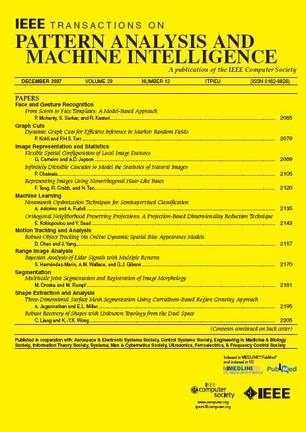SNNTracker:在线高速多目标跟踪与Spike相机。
IF 18.6
1区 计算机科学
Q1 COMPUTER SCIENCE, ARTIFICIAL INTELLIGENCE
IEEE Transactions on Pattern Analysis and Machine Intelligence
Pub Date : 2025-09-16
DOI:10.1109/tpami.2025.3610696
引用次数: 0
摘要
多目标跟踪(MOT)对于自动驾驶和机器人等应用至关重要,但传统的基于图像的方法由于低帧率引起的运动模糊和时间间隙而在高速场景中挣扎。长钉摄像机具有连续记录时空信号的能力,克服了这些限制。然而,现有的基于峰值的方法往往依赖于中间图像重建或离散聚类,这限制了它们的实时性和时间连续性。为了解决这个问题,我们提出了SNNTracker,这是第一个为尖峰相机量身定制的基于全尖峰神经网络(SNN)的MOT算法。SNNTracker集成了一个基于动态神经场(DNF)的目标检测机制和一个基于赢者通吃(WTA)的跟踪模块,该模块具有在线峰值时间依赖的可塑性(STDP),用于目标轨迹的自适应学习。通过直接处理尖峰流而不重建,SNNTracker减少了延迟、计算开销和对图像质量的依赖,使其成为超高速环境的理想选择。它通过利用snn估计的运动预测和长期在线聚类,即使在遮挡、严重光照变化或暂时物体消失的情况下,也能保持稳健、连续的跟踪。我们构建了三种类型的尖刺相机MOT数据集,涵盖了不同现实世界场景中的密集和稀疏注释,包括相机自我运动,变形和超快速运动(高达2600 RPM),遮挡,室内/室外照明变化和低能见度跟踪。大量的实验表明,SNNTracker始终优于最先进的MOTA方法——无论是基于人工神经网络的还是基于snn的——在许多序列中,MOTA得分都在96%以上,最高可达100%。我们的研究结果强调了spike驱动snn在低延迟、高速和无标签的多目标跟踪方面的优势,推进了神经形态视觉的实时感知。本文章由计算机程序翻译,如有差异,请以英文原文为准。
SNNTracker: Online High-speed Multi-Object Tracking with Spike Camera.
Multi-object tracking (MOT) is crucial for applications such as autonomous driving and robotics, yet traditional image-based methods struggle in high-speed scenarios due to motion blur and temporal gaps caused by low frame rates. Spike cameras, with their ability to continuously record spatiotemporal signals, overcome these limitations. However, existing spike-based methods often rely on intermediate image reconstruction or discrete clustering, which limits their real-time performance and temporal continuity. To address this, we propose SNNTracker, the first fully spiking neural network (SNN)-based MOT algorithm tailored for spike cameras. SNNTracker integrates a dynamic neural field (DNF)-based attention mechanism for target detection and a winner-take-all (WTA)-based tracking module with online spike-timing-dependent plasticity (STDP) for adaptive learning of object trajectories. By directly processing spike streams without reconstruction, SNNTracker reduces latency, computational overhead, and dependency on image quality, making it ideal for ultra-high-speed environments. It maintains robust, continuous tracking even under occlusions, severe lighting variations, or temporary object disappearance, by leveraging SNN-estimated motion predictions and long-term online clustering. We construct three types of spike-camera MOT datasets covering dense and sparse annotations across diverse real-world scenarios, including camera ego-motion, deformable and ultra-fast motion (up to 2600 RPM), occlusion, indoor/outdoor lighting changes, and low-visibility tracking. Extensive experiments demonstrate that SNNTracker consistently outperforms state-of-the-art MOT methods-both ANN- and SNN-based-achieving MOTA scores above 96% and up to 100% in many sequences. Our results highlight the advantages of spike-driven SNNs for low-latency, high-speed, and label-free multi-object tracking, advancing neuromorphic vision for real-time perception.
求助全文
通过发布文献求助,成功后即可免费获取论文全文。
去求助
来源期刊
CiteScore
28.40
自引率
3.00%
发文量
885
审稿时长
8.5 months
期刊介绍:
The IEEE Transactions on Pattern Analysis and Machine Intelligence publishes articles on all traditional areas of computer vision and image understanding, all traditional areas of pattern analysis and recognition, and selected areas of machine intelligence, with a particular emphasis on machine learning for pattern analysis. Areas such as techniques for visual search, document and handwriting analysis, medical image analysis, video and image sequence analysis, content-based retrieval of image and video, face and gesture recognition and relevant specialized hardware and/or software architectures are also covered.

 求助内容:
求助内容: 应助结果提醒方式:
应助结果提醒方式:


